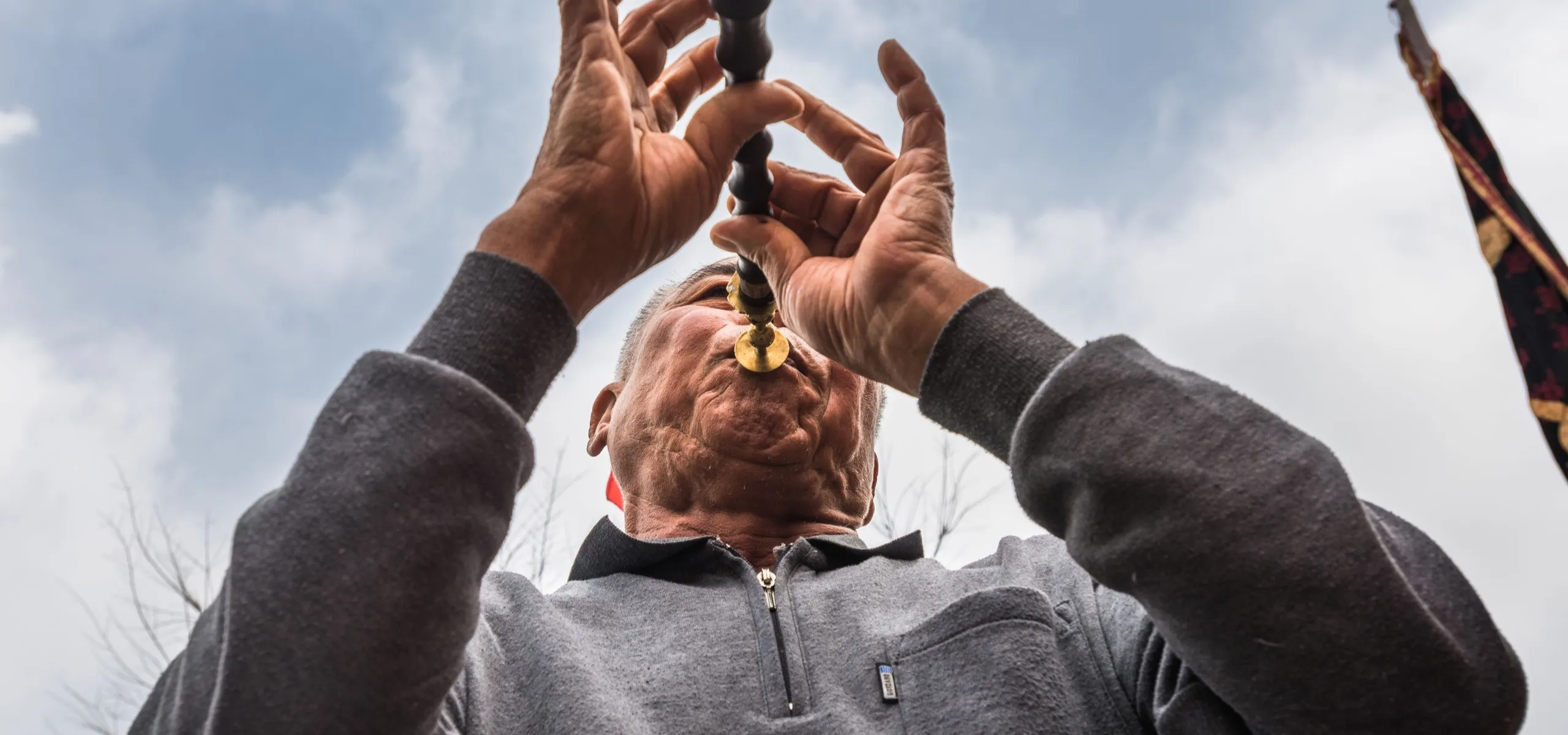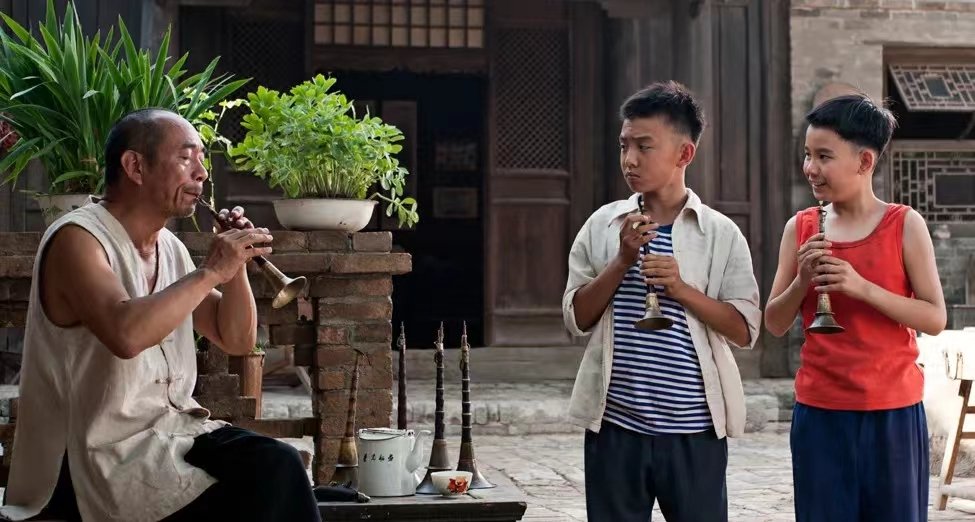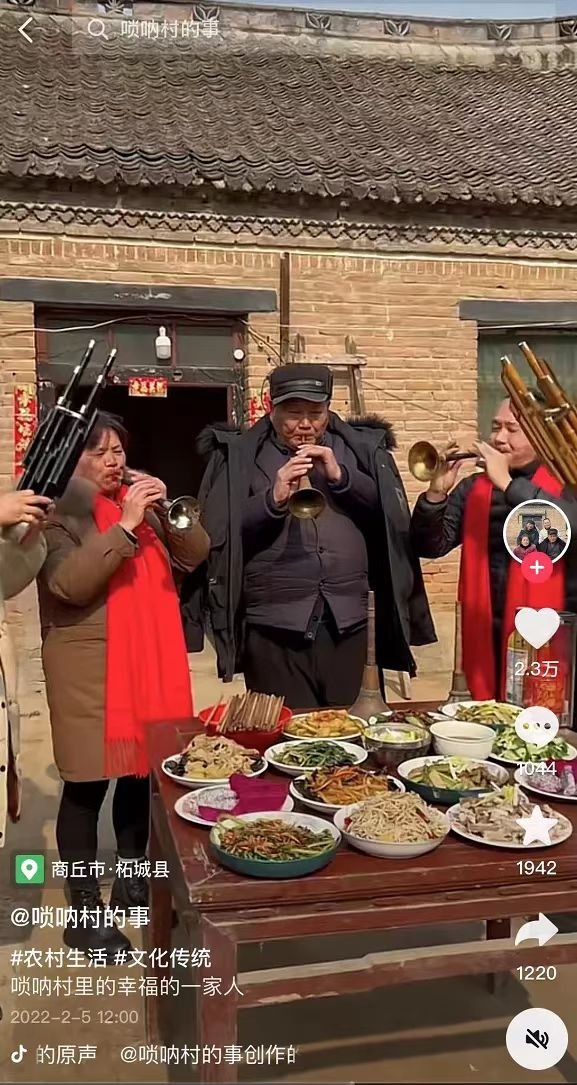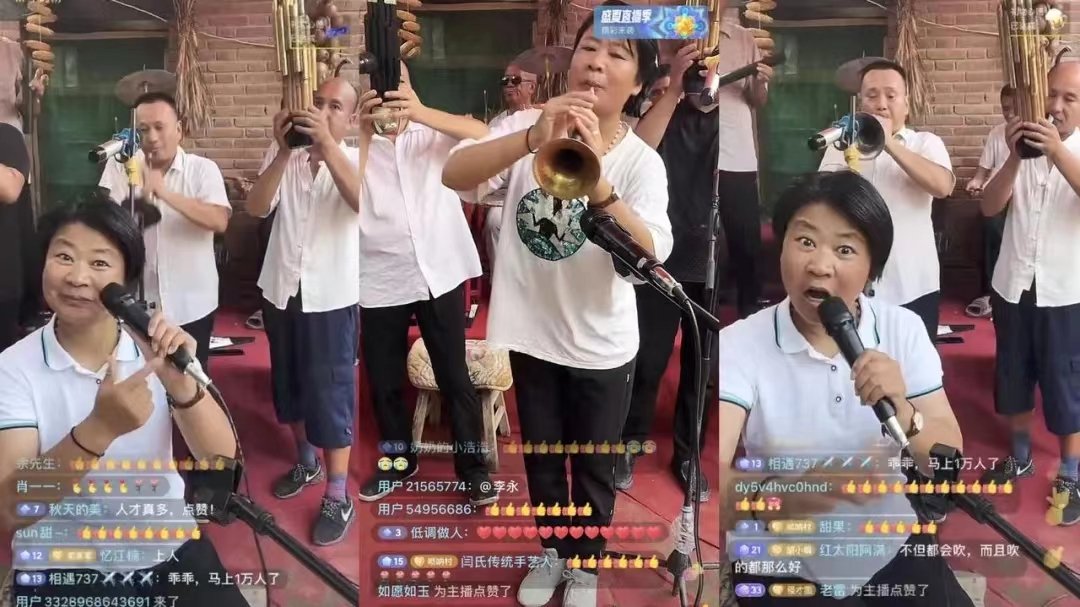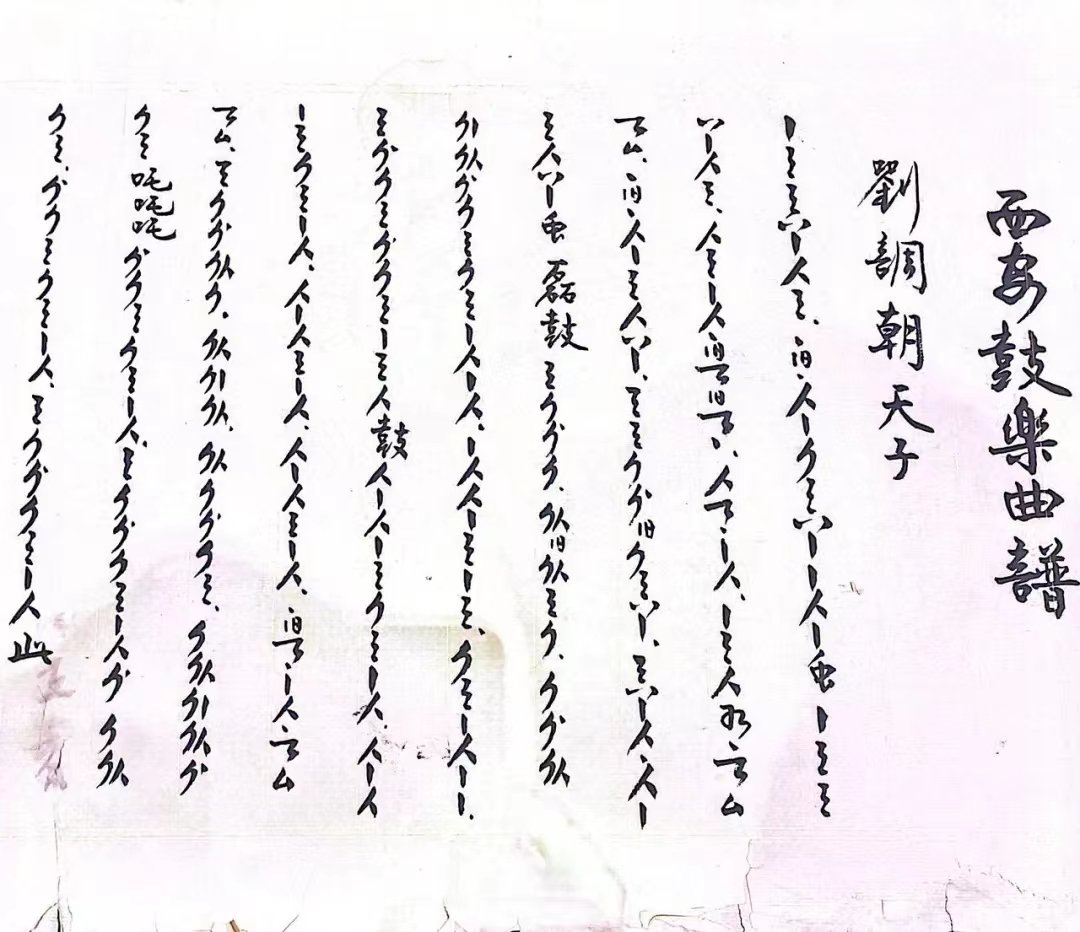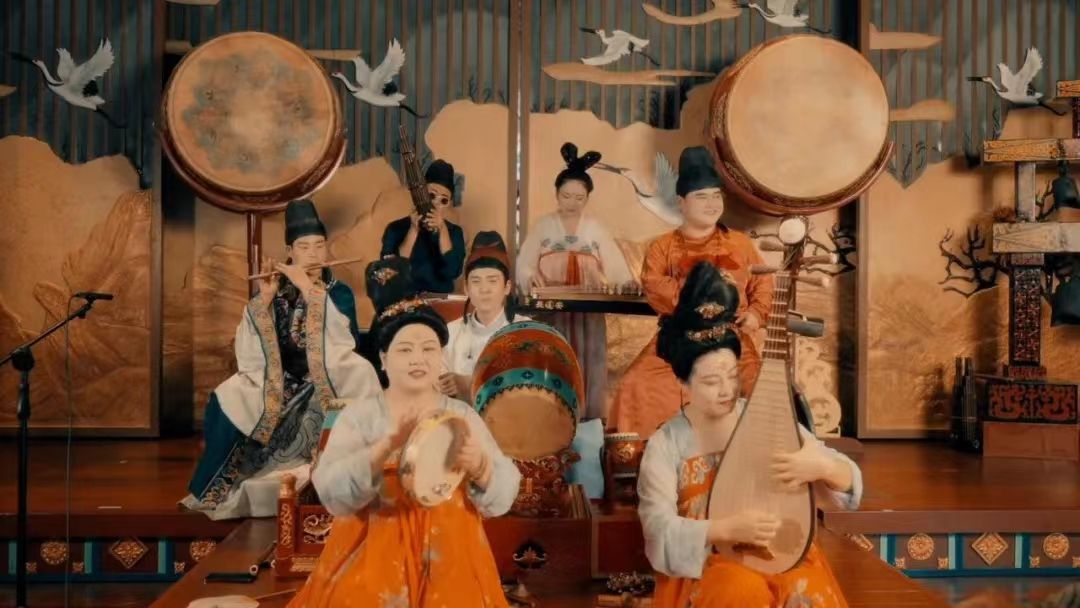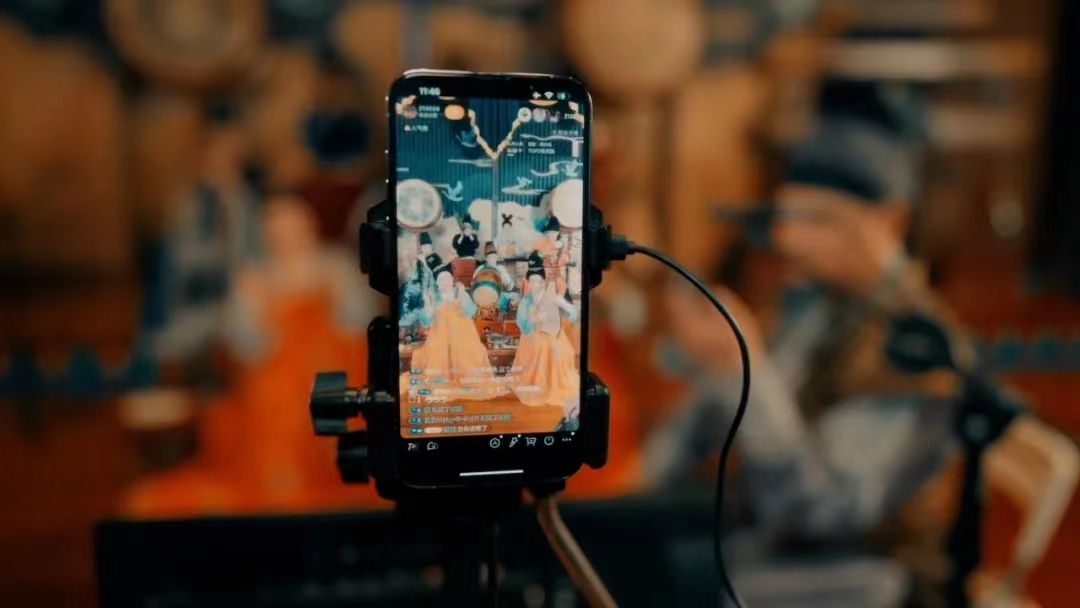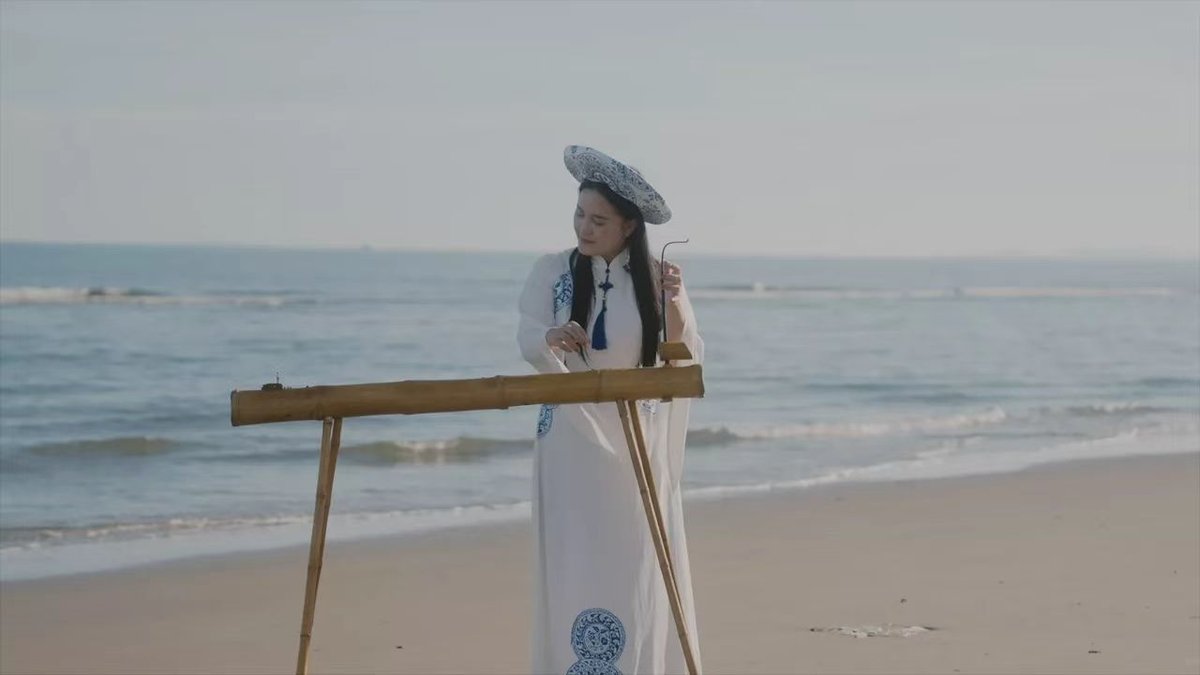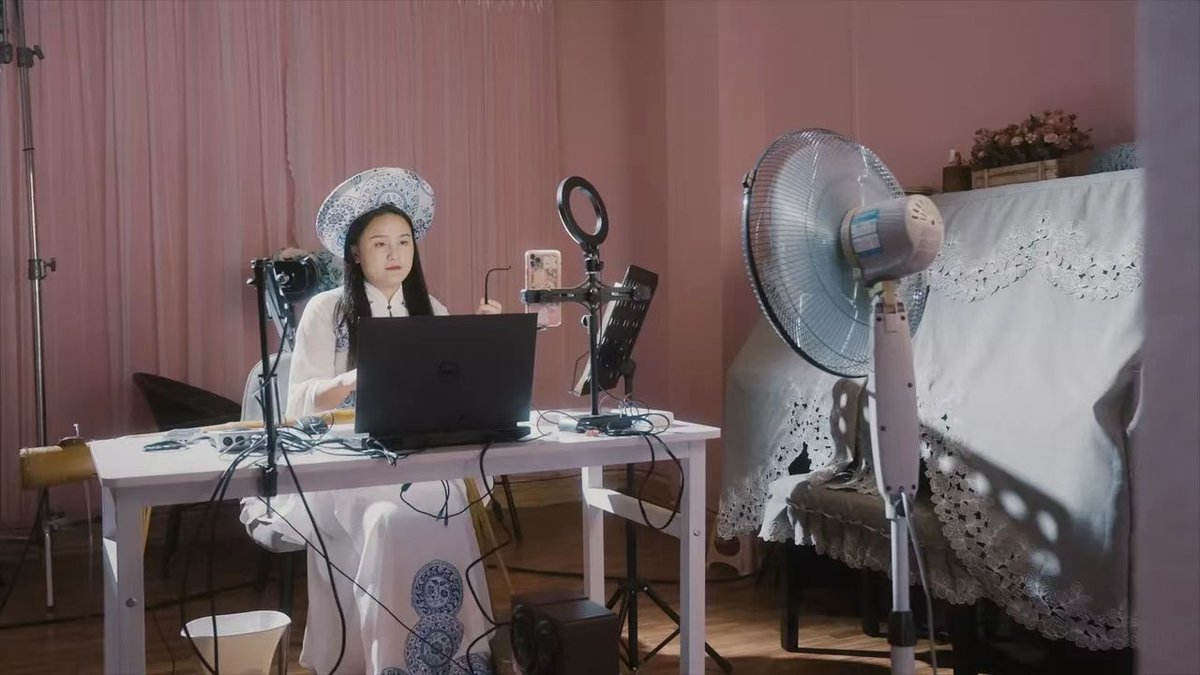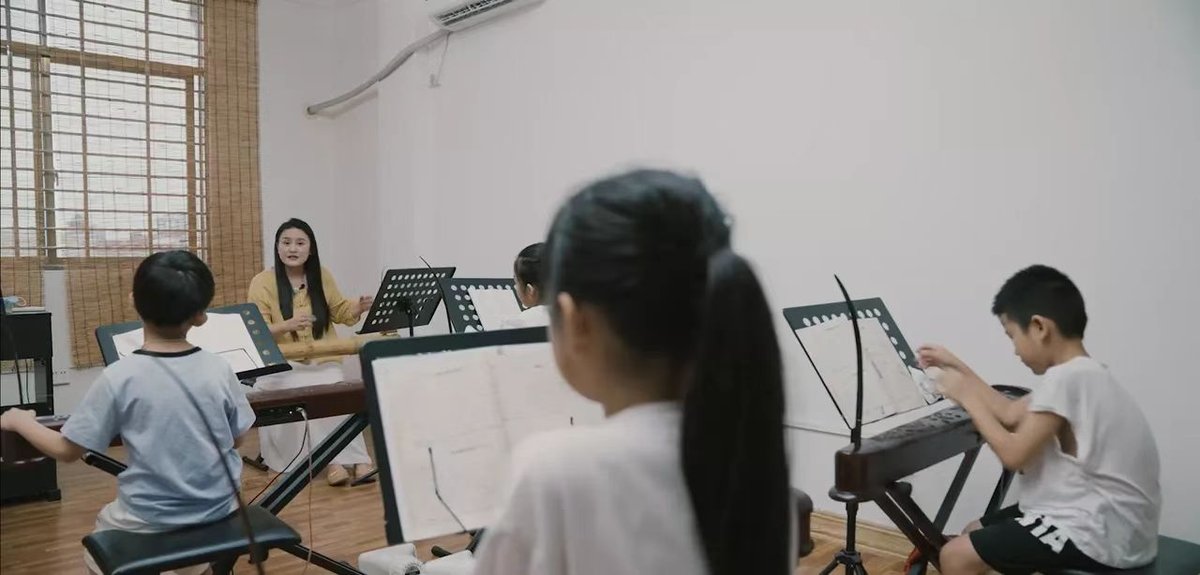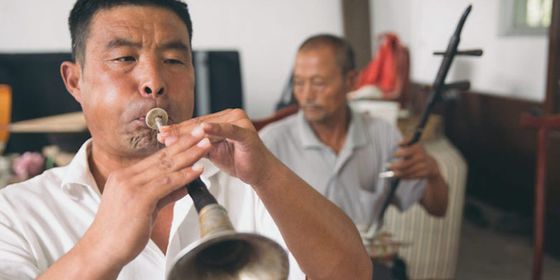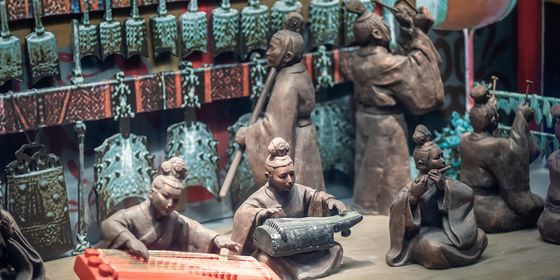Faced with dwindling interest and pandemic restrictions, traditional Chinese musicians turn to the internet to make a living and preserve their dying sounds
When you hear the word “music,” what is the first thing you think of? Are you picturing traditional Chinese instruments, or something else? In recent years, there has been a renaissance of interest in traditional Chinese culture, so one would think that traditional music would gain a bigger audience.
But when you think about it, how many traditional music performances are there in a year? In the last three years, the pandemic has reduced the already limited performance opportunities for traditional musicians. Today, we welcome performers of three different folk instruments to tell us how they’ve managed to fight against the tides and find a new stage for their craft—via livestreaming.
-1-
Songs of the Phoenix
As a Chinese saying goes, “When the suona pipes, the ceremonies start.” In Chinese folk culture, the suona, a double-reed pipe, is an indispensable part of weddings and funerals. Today’s first speaker, Ma Chunfeng, learned to play the suona as a child. In his home village, Mazhuang, every family plays the suona, and every family can organize a suona band to play in the surrounding villages.
The legend goes that the people of Mazhuang village have been playing the suona since the Tang dynasty (618 – 907). For Ma Chunfeng, the suona is a livelihood, an art form second.
My name is Ma Chunfeng. I am 47 years old, and I’m a professional suona player. During the agricultural season, I work in the fields, and I also sell suona reeds to make a living.
When I was growing up, around 85 percent of the people in our village could play the suona. I started learning in elementary school. Every weekend, my parents would give me a suona and tell me to practice when I had nothing else to do. The idea was that I could figure out the basics first, then improve on the specifics, and this would be a more efficient way to learn.
When I was 7 or 8, I started playing bangzi [a wooden percussion instrument] in our family band. By the time I was 11 or 12, I could play at banquets. I usually went with my teachers, and they let kids like us play at the start before all the guests had arrived, and told everybody we were there to practice. Once the real action started, then the masters would take over.
Back then, whenever there was a wedding in the village, we would go and play the song “Hundred Birds Worshiping the Phoenix.” We’d follow the bridal litter through the lanes and alleyways, and whenever we passed by someone’s home, we’d play our hearts out. “Who’s getting married?” the families inside would wonder, and they’d all come out to look.
When I was a kid, we had a suona school in our village. I studied there for a while. My wife came from a village 20 or 30 miles away from ours, and she also came to study at the school. That was how we met.
At school, there were lots of boys and girls studying together, and developing feelings for each other. We’d swap stickers and suona reeds with the classmates we liked. My wife asked her friends to give me some gifts, and that’s how we got together. At first, our teachers didn’t know, but after they found out, they were afraid our romance would interfere with our practice, so they gave the girls a curfew at night and forbade dating.
As an old saying goes, “to learn the suona, you practice through the coldest days of winter and the hottest days of summer.” There’s no such thing as shirking or taking a break. In winter, we practiced in the freezing cold and blew a column of saliva into the pipe. Overnight, it would freeze into a big icicle, like the icicles hanging from our roofs. I cried at times, and once, I lost feeling in my hands. My dad said all I had to do was put my hands on the frozen ground and rub snow over them. I didn’t believe it, but I tried it, and it actually worked.
Later, a director made a film called Song of the Phoenix [in 2013, directed by Wu Tianming]. It was quite true to our lives. When I was a child, there were lots of children and working-age adults in the village, and many people learning the suona. But now everyone’s gone to the city to work, and only the elderly are left behind. It’s also getting harder to make a living as a suona performer, which led many people to change their career. Those who can play the suona will play when there are gigs, and take other jobs when there aren’t. It’s impossible to live off of playing the suona alone—think about it, how many suona gigs are there in total in today’s world?
Since the pandemic started in 2019, our lives have slowed down. Previously, my family lived by playing the suona, doing farm work, and selling reeds. Now, there are fewer and fewer weddings and funerals needing suona players. That’s just the way it is.
That was when I discovered Douyin (TikTok). I named my account, “Suona Village Happenings,” because I want people to discover my village through this account. You may have seen my videos of old people sitting around in the fields. They have nothing to do, and aren’t allowed to leave the village due to the pandemic, so they have no opportunities to perform.
Some people support my decision to go into livestreaming; others don’t. My mom used to say, “Son, you guys sit around all day and blow on the suona. How long are you going to blow and to what end?” I would say, “Mom, don’t worry, the money will come in soon.”
To be honest, money is very important to me and to our village. I remember one day I made 500 to 600 yuan by livestreaming. Some of my fans start sending us “virtual gifts” as soon as they start watching the stream.
One day, shortly after I started my livestreaming, I asked my father and my uncle, who were helping me with the broadcast, “Dad, Uncle, do you feel tired playing on my livestream?”
“A little,” they said.
“Are you happy?” I asked.
“Very happy!” they said.
Since we started livestreaming, I feel like my dad has been in better spirits. Whether or not we make money, at least he’s able to work again.
I’ve experienced all the ups and downs of a livestreamer’s career. Since I started broadcasting, I’ve spent tens of thousands of yuan in overhead costs. We broadcast for two hours a day. My wife has lost 10 kilograms, and we’ve had arguments over the equipment I bought for livestreaming, where I’ve made her cry. Now, we have a stable cast of characters in my livestream, and sometimes, village elders with nothing else to do will also join in. Our numbers and income from streaming are increasing slowly; I hope things will gradually improve.
With some of the money he makes from livestreaming, Ma Chunfeng buys cigarettes and gifts for his neighbors, and will treat the villagers who consent to appear on camera to meals. “Chunfeng has made our village come to life again,” some of his neighbors have said, much to his delight. Hundreds of years ago, the villagers made a living from playing the suona. Hundreds of years later, with their suona, they’ve found another way of making a living.
-2-
Sounds from the Imperial Court
Unlike the earthy suona born from the muddy fields, the Dongcang wind and percussion ensemble was born in Chang’an (now Xi’an), the capital of 13 dynasties in ancient China. Yet it has proved just as resilient as the suona. Before the pandemic, there were performances by Dongcang ensembles every day at Tang Paradise, a theme park in Xi’an. The troupe would sit in full makeup in Tang dynasty robes, and play as well as dance.
The Dongcang ensemble is one branch of the Xi’an wind and percussion ensemble, which was put on UNESCO’s Representative List of Intangible Cultural Heritage in 2009. It is a musical tradition that survived many upheavals in over 1,000 years. But even in Xi’an, there are few people who truly understand it.
My name is Qi Xingfeng. I’m 33 years old, and I research the Xi’an wind and percussion ensemble.
The Xi’an ensemble started in the Han dynasty (220 BCE – 206 CE), and has three schools: Buddhist, Daoist, and folk. Before the An Lushan Rebellion (755 – 763), all the musicians were employed at court; after, they were exiled. Some ended up in Buddhist monasteries, some in Daoist temples, and others ended up among ordinary people. The Dongcang ensemble is part of the Buddhist school, started by musicians who ended up in monasteries. It’s said to have been passed down from a monk with the surname Mao.
During the Ming (1368 – 1664) and Qing (1616 – 1911) dynasties, Dongcang ensembles were among the few people in Xi’an with access to imperial food supplies. Musicians were trained by skilled monks on reading the music and the playing techniques. Whatever your school, there were two methods of playing which we can still see today: “sitting music,” played indoors around a table, and “walking music,” played outdoors in temple fairs and ceremonial processions, often with a chorus.
Like many folk arts, Xi’an ensemble music was originally handed down orally from master to student. Musicians memorized gongche notation, an ancient Chinese notation that used Chinese characters to represent notes, and some works had no written notation at all. That means if a master dies, the work could easily die with him.
In the 1960s, Zhao Gengchen, a fourth-generation master of Dongcang music, built a hut in front of his house to store his sheet music. But the hut collapsed in a storm, so a lot of the music was lost. Zhao ended up saving four works of Dongcang music, and passed the knowledge to his son Zhao Xiaomin and his student Fan Bingnan.
In ancient history, knowledge of Dongcang music was handed down from males to males, never to females or to anyone outside the family. To ensure the survival of this ancient art, Zhao Xiaomin and Fan Bingnan broke with tradition and recruited a class that included both boys and girls. I was one of them.
Learning a traditional art is hard work. I started in 2004. Our masters didn’t recruit any children from the city—they were usually the only child in their family, and expected to get a better education and a higher-paying job—so they went around the villages and recruited kids like us. We didn’t know what we were going to learn; we just went along. They rented a three-story building in Chang’an county, and provided room and board. They took care of all our needs so that all we had to do was dedicate ourselves to learning—every day, from 8 or 9 in the morning to 6 in the evening.
Our teachers lived in the city, and would ride the bus to our county every day to teach us. The teacher would sing a phrase, and we’d sing it back. We lost about 100 students that year; if they didn’t want to learn anymore, they simply left. Think about it: How many 14 or 15-year-olds would be content to sit all day memorizing notes in ancient characters they couldn’t read? In the end, only 18 of us were left.
Looking back, if our masters hadn’t persevered, if they hadn’t exhausted all their resources finding gigs and performance venues for us, then the Dongcang ensemble might have disappeared altogether, to say nothing of our performing in Tang Paradise and getting a stable income today.
The Dongcang ensemble performing in a banquet for their 18th anniversary. Master Fan Bingnan is in the center (Douyin)
In 2019, the pandemic started, and we could no longer find paid gigs. To make a living, people turned to other careers: delivering takeout, being designated drivers to drunken revelers. As a designated driver, I’ve had nights when I worked until 4 or 5 in the morning, and could barely function the next day. But you do what you have to do to survive.
At this point, I thought it was critical that I find some other sources of income for everybody. I thought of using Douyin to attract more attention to Xi’an ensemble. People know about the Dayan Pagoda and the terracotta warriors, but the Xi’an ensemble is the province’s only intangible cultural heritage recognized by UNESCO, and not even Xi’an people themselves know this. This is embarrassing. If my instrument is my passion, then ensuring its survival is my responsibility.
Not everyone was supportive when I started livestreaming. There was a lot of competition among livestreamers in Xi’an, and a video couldn’t capture the whole of Xi’an ensemble. My masters were worried that I would corrupt some of the art through livestreaming. I made a few rules for us: First, we need to represent Xi’an ensemble authentically. Second, we need to innovate. Xi’an ensemble traditionally only used the di flute, the sheng pipes, and the double-reed guan flute. We’ve added the bianzhong bells, guzheng and guqin zither, the pipa lute, and the konghou harp. Third, we must cater to our audience. We do this by playing familiar tunes.
With the income we get from viewer donations, the ensemble’s members no longer have to work two jobs to pay the bills. On the days when they don’t have live performances, they have another, virtual stage—because all musicians should be seen on the stage.
The previous two speakers have been dedicated to their instruments since childhood, inspired by their families or teachers. But the next performer had to be convinced to take up her instrument, and she approached it with a degree of prejudice.
-3-
Duxianqin: Music or Weapon?
My name is Zhao Xia. I am 36 years old. I play the duxianqin, a plucked instrument with just a single string that I teach and promote as my day-to-day job.
Duxianqin is an instrument of the Jing people, who live mainly in the Guangxi region. Though the instrument has just one string, a skilled performer can make it play harmonies. It was originally played as an accompaniment for poets when they recited, and later for musicians and dancers, or played alongside other instruments. It is quite obscure: In China, there are fewer than 40,000 ethnic Jing people, and even fewer still who can play the duxianqin.
In my memories, on the island where I grew up, every day there was an old man who, as soon as he’d eaten his fill of supper, would put a megaphone on the roof of his house and start playing the duxianqin. He would play almost every evening. Our village was small, so almost everyone could hear him play. I was about 10 years old at the time, and I felt it made such a mournful sound.
I watched this man play for many years. When I was 16, I went to school in Nanning, the capital city of Guangxi, to study ethnic vocal music, and that was when I met my first duxianqin teacher. He wasn’t Jing, but he could play, and he even started an elective class teaching this instrument. When he found out I was Jing, he tried to persuade me to take his class, though I was reluctant to do so.
In the end, I went along because a few of my classmates had signed up. The teacher would call us before every class to remind us to attend. Unlike my singing classes, I was always late to my duxianqin class. After three years, I only learned about five pieces, but in the process, I realized that duxianqin had its own charms, even if the sound wasn’t quite as I remembered from my childhood.
After my graduation, I got a job at a Jing theme park. There was a stage where I could perform. After that, I worked as a receptionist at a hotel, but whenever they needed a duxianqin performer at a theme park or a corporate event, I would go and play. That was back in 2005, and I could earn 50 yuan per show. I was pretty happy to have some pocket money
In the winter of 2006, I got a call from the cultural bureau of Dongxing city, inviting me and two duxianqin teachers to go on a show with CCTV. That was exciting. As a matter of fact, they needed three people and there was no one available but me. I was only 20 years old, and the two teachers were more than a decade older. The three of us performed on an episode of Chinese Folk Song Festival, a competition for folk musicians, and I met many TV personalities I’d only seen on the screen before. We played a really ancient Jing song called “The Wind Blows Across the Bridge.”
When I came home, everybody complimented me and said I played really well. But I knew my skills were basic at best, so I vowed I would start seriously learning this instrument.
Zhao Xia’s second teacher was He Shao, a renowned duxianqin performer. In the 1960s, He was sent by his “art worker troupe” to the islands inhabited by the Jing people to learn from folk musician Su Shanhui, and later made some modifications to the playing technique.
My tutelage under Teacher He didn’t start smoothly. A friend introduced us, but after a few classes, I stopped going, because the techniques he taught were too difficult. He was baffled at first as to why I stopped showing up, but I guess he forgot about me after a while. I started practicing by myself, but it didn’t feel right; everything I played sounded the same, but Teacher He could imbue every tune with a different sound. So, awkwardly, I asked him to teach me again.
First, I called him twice, and each time he politely declined, saying he had no time. It was only when I showed up in person at his home that he agreed to continue teaching me. Teacher He was quite a character, and for someone at his level, he could pick and choose which students he wanted to teach. I was lucky that he accepted me.
To get to my classes, I had to ride a bus from Dongxing to Fangcheng, then hire a motorbike to take me to his house. A round trip took three or four hours, but I made these trips until 2017, when Teacher He passed away. During my studies, I took a side job as a tour guide in a museum until 2012, when I began teaching students myself and had a few performing opportunities. It’s hard to master the duxianqin.
I started sharing a few clips of myself playing duxianqin online in 2018, but not many people watched them. In 2019, I couldn’t go to work anymore due to the pandemic, so I started livestreaming on Douyin frequently, an hour at a time. Still, nobody watched—the viewers were in the single digits for every stream. But I persevered, singing one day, playing duxianqin another. Finally, in May of 2020, I had a hit: a song called “Zhu Bajie Piggybacking His Wife.”
I had never been on the trending topics list before. Suddenly, I had all these comments, and more than 99 likes. Is this what it’s like to go viral? I was ecstatic. I turned on my livestream, and there were more than 3,000 people watching. I didn’t have time to say hello to them all. I was just a musician; I didn’t know much about livestreaming, and I had just a few dozen songs in my repertoire. Over the last two years, I’ve increased it to about 300.
Now, I broadcast live every evening at 8:30, playing 15 to 18 pieces at a time. Duxianqin is best-suited for lyrical, sentimental, and melancholy pieces. There are faster pieces too, but few that are suited to the instrument. If my viewers request songs, I will listen to them first to see if they’re suitable, and only then will I start practicing. I always start my broadcast every night with the most popular songs, with the songs that get the most likes, so that I can keep viewers in the room.
My most frequent question from first-time viewers is, “Is this a weapon?”
I get these questions in every broadcast, so I always dedicate some time to sharing a few facts about duxianqin and my ethnic group, and tell them where in China we are located. Douyin is a huge platform—you can gain a lot more publicity there than offline. It allows this instrument to break the boundaries of ethnicity and culture and find its own audience.
I opened two “heritage protection spaces,” which are venues where I can teach children when I’m not livestreaming. Due to the pandemic, my student numbers have dropped from 70 to 80 to two or three. But as long as someone is willing to learn, I’ll teach them.
You might not be aware that border towns like ours have the hardest time controlling the pandemic. We have an outbreak almost every month. A couple of days ago, they closed down a few more districts. A lot of people in Dongxin say they can’t live like this anymore. Many have left, and those who can afford it have bought apartments in bigger cities in Guangxi. But people like me don’t want to leave. We want to stay and fight. I’m also reluctant to leave my venues, because I’ve invested a lot of money and effort in it. I don’t want to just throw in the towel.
I earn a lot more from livestreaming than from my regular jobs. It might be chump change to the KOLs in the livestreaming world, but to me, it makes a big difference. Almost all my income goes to my two venues. It would be difficult, though not impossible, to afford to keep them without livestreaming—I make only 2,000 yuan a month from other income, but the rent is 4,000 a month.
In Vietnam, duxianqin [known there as đàn bầu] is professionalized. For duxianqin to continue to develop, it needs to look nationwide. In our parts, most people know of Jing instruments, but even people in other cities in Guangxi don’t; clearly, we don’t have enough influence. My plan for us to gain influence involves developing a program to train teachers nationwide; they will come from all over China to learn, and then go back home to teach. One day, when we hold a competition, we will have teachers and students participating from all over the country—that’s my ambition.
Traditional music is under a lot of pressure today: Are young people no longer interested? Should we put performances on hold during the pandemic? Are folk instruments no longer suited to modern lifestyles? But livestreaming has provided folk musicians with a new stage. All they need is a stage, and all that the public needs is a chance to fall in love with their music.
In the past year, Douyin has hosted nearly 1.8 million folk music performances, totaling 2.3 million hours of playing. Around 87 percent of folk musicians on Douyin have earned some income from viewer donations. Niche musical instruments like the xun flute, the duxianqin, and the konghou have posted “box office” numbers earning tens of thousands. In the coming year, the platform aims to help 1,000 folk performers earn more than 10,000 yuan a month.
After all, the survival of folk music depends on the survival of the musicians.
Cover image by Huang Ruide (黄瑞德): A villager in Shunde, Guangdong province, play the suona to remind his neighbors to come out and worship the God of Wealth on the fourth day of the Lunar New Year, 2014





